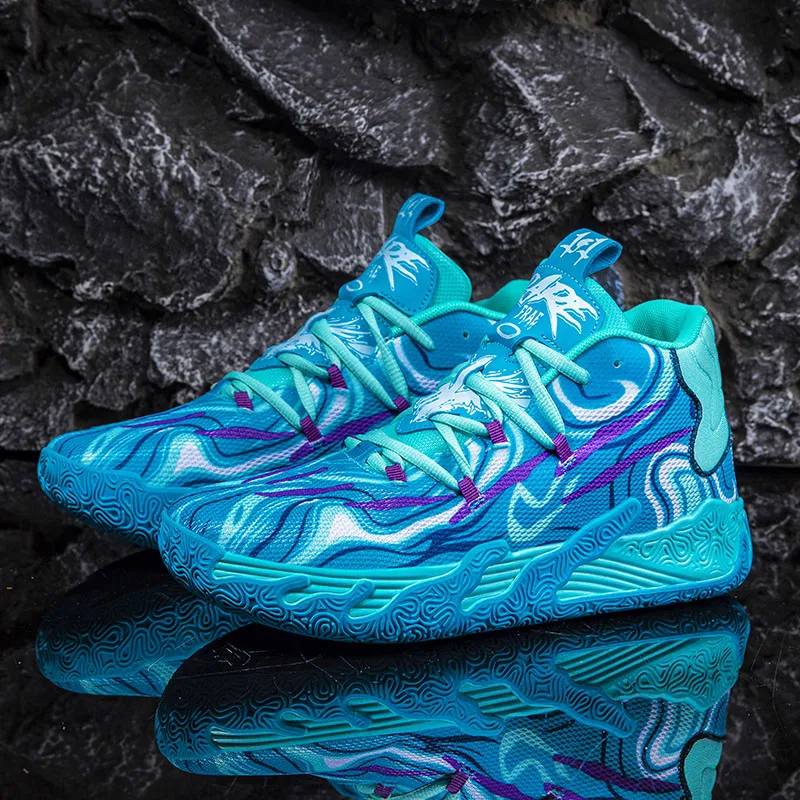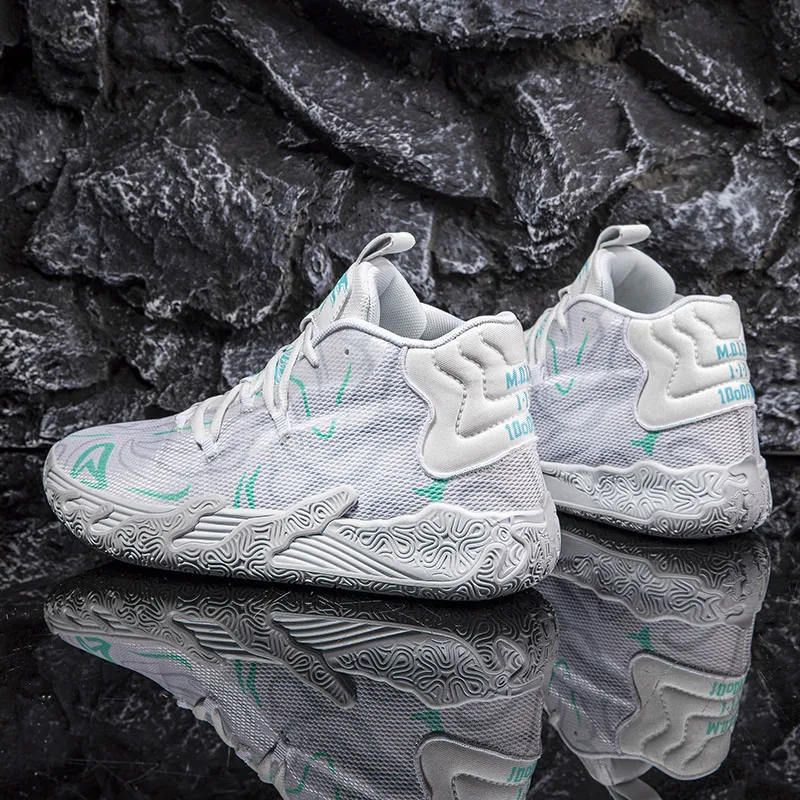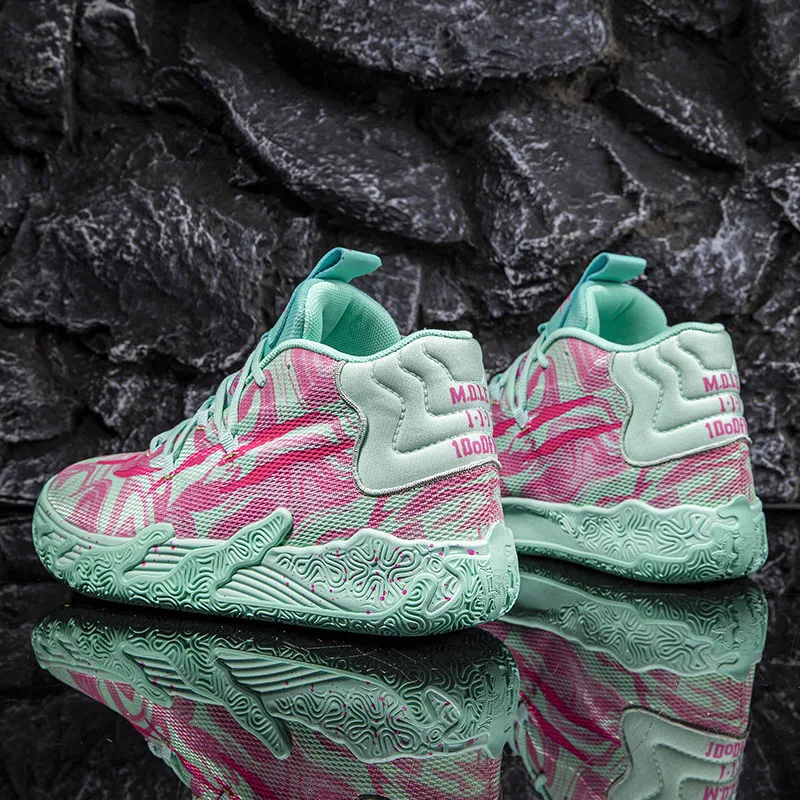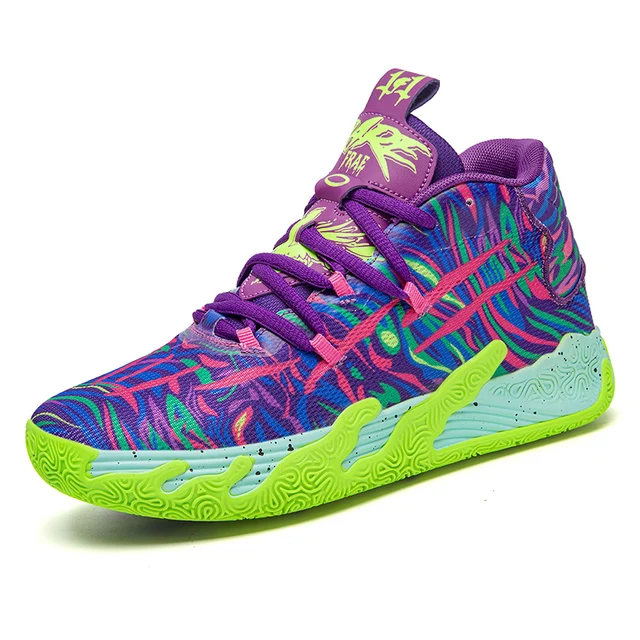Introduction
Basketball is an exhilarating sport that demands agility, speed, and precision. Players rely heavily on their footwear to provide support, traction, and comfort during intense games. The right fit for basketball shoes is crucial not just for performance but also for injury prevention. Let’s explore how should basketball shoes fit to help players make informed choices.

The Importance of Proper Fit in Basketball Shoes
When it comes to basketball shoes, fit matters more than you might think. A proper fit allows for better performance on the court. Poorly fitting shoes can lead to discomfort and even injury. When shoes are too tight, they can cause blisters or pinched nerves. Shoes that are too loose can lead to ankle sprains or lack the stability needed for explosive movements.
To find the perfect fit, consider your foot’s shape and size. Everyone’s feet are different, and basketball shoes are not a one-size-fits-all. Take the time to measure both the length and width of your feet. Many sporting goods stores offer size measurements. It is essential to measure your feet at the end of the day. Feet tend to swell during daily activities, so measuring at this time can help provide a more accurate size.
Also, consider your playing style. Players who rely on speed may prefer a tighter fit for added responsiveness. Those who play a more physical style may benefit from extra cushioning and support. Ultimately, understanding your unique needs will help you narrow down your choices.
Key Fit Features to Look For in Basketball Shoes
When shopping for basketball shoes, pay attention to some key fit features. Firstly, the length of the shoe is critical. Your toes should lightly touch the front of the shoe when standing. This touch should not cause discomfort; you should have about a half-inch of space beyond your longest toe. This little extra room allows for movement when you jump or change direction suddenly.
Next, consider the width of the shoe. Some players have wider feet, while others are more narrow. Basketball shoe manufacturers often create models that cater to different widths. If you have wide feet, look for shoes labeled as “wide” or “extra wide.” This will provide a greater level of comfort and prevent blisters or any rubbing that can occur with a tight fit.
Another essential feature is the heel lock. When you lace up your shoes, your heel should feel snug in the back of the shoe. A loose heel can lead to instability and increase your risk of injury. Check for heel slippage as you walk or perform basketball movements. It’s best to ensure there’s little to no movement. If you feel your heel lifting away from the shoe, you should consider a different model.
The Role of Cushioning and Arch Support
Cushioning and arch support are also vital elements of basketball shoe fit. Good cushioning absorbs the impact when you jump or land. A shoe with appropriate cushioning can make a significant difference in reducing the stress on your feet and joints.
Arch support is important because it helps distribute your body weight evenly across the foot. This can reduce the likelihood of injuries like plantar fasciitis or other foot-related problems. Some shoes come with built-in arch support, while others allow for custom insoles. If you have flat feet, consider shoes specifically designed for those with that foot shape. Conversely, if you have high arches, opt for shoes that provide extra support in the arch area.
In addition to cushioning and arch support, don’t overlook the shoe’s breathability. A well-ventilated shoe will keep your feet cooler and reduce the chances of excessive sweating. This feature contributes to overall comfort, especially during long games or practice sessions.
Trying Before You Buy: Tips for Finding Your Fit
Once you have an idea of the features you want, it’s time to try on some shoes. Always try on both shoes, as many people have slightly different-sized feet. Wear the type of socks you plan to wear while playing basketball. This is crucial because the thickness of socks can affect the fit.

Walk around the store to get a feel for how the shoes fit. Jump up and down if possible. This action will help you see how the shoes feel when you’re in motion. Pay attention to any pressure points or discomfort. If you feel any tightness or pain, it’s best to try a different size or style.
Also, take your time. Properly fitting shoes are essential for basketball. Do not rush through the process or settle for a pair that doesn’t feel just right. Buying the first shoes you try might lead to regrets later. Basketball shoes are an investment in your performance and health.
Common Mistakes Players Make When Choosing Basketball Shoes
Even with the best intentions, players often make a few common mistakes when selecting basketball shoes. One major error is not considering the playing surface. Indoor courts require different types of soles compared to outdoor courts. Many players forget to choose shoes with the appropriate traction for the surface they will be playing on. Shoes designed for outdoor play often have a more durable rubber, while indoor shoes offer better grip on polished floors.
Another mistake is over-relying on brand loyalty. While reputable brands often produce high-quality shoes, each model can fit differently. Always assess how the specific shoe feels on your feet rather than simply going for a well-known brand.
Additionally, some athletes choose shoes solely based on aesthetics. While style can be a factor, it should never be the primary reason for selecting a pair of basketball shoes. Looks won’t matter much if the shoes cause pain or hinder performance.
Finally, many players underestimate the importance of replacing old shoes. As shoes wear down, the support and cushioning diminish. Regularly inspect your footwear for signs of wear, especially if you play frequently. If you notice uneven wear patterns or if your shoes feel less supportive, it’s time for a new pair.

Maintaining Your Basketball Shoes for Longevity
Once you’ve found the right fit, it’s important to take care of your basketball shoes. Proper maintenance will ensure they last for multiple games and practices. Start by cleaning your shoes after each use. This does not mean throwing them in the washing machine, as that can damage the materials. Instead, wipe down the shoes with a damp cloth to remove dirt and mud. Use a toothbrush for areas that need extra scrubbing.
Allow your shoes to air dry after cleaning. Avoid placing them in direct sunlight or near heat sources, as this can warp the materials. Instead, let them dry naturally in a well-ventilated area.
Storage also plays a role in your shoes’ longevity. Keep them in a cool, dry place and use a shoe bag if carrying them to and from the court. This will protect them from dirt and other damaging elements.
Finally, avoid wearing basketball shoes outside of the court. While they may look stylish, other surfaces can wear out the rubber soles faster. Save your shoes for the game to maintain their grip and cushioning.
Understanding Your Specific Foot Type for the Right Fit
Understanding your foot type will help you find the right basketball shoes. Feet come in various shapes and sizes, including high arches, normal arches, and flat feet. Each foot type may require different shoe features to provide support and comfort.
For those with flat feet, look for shoes that offer maximum stability and motion control. These shoes are designed to support the foot’s natural shape and prevent overpronation. They usually feature extra cushioning and arch support to help you feel comfortable while playing.
Those with high arches should consider basketball shoes that offer excellent arch support and cushioning. A high-arched foot can create additional stress on the joints. Shoes with good cushioning in the midsole can help reduce that stress. Look for shoes with additional padding around the ankle for extra comfort and support.
Players with a normal arch have a bit more flexibility in their shoe choices. Most basketball shoes will accommodate this foot type. However, it’s still important to try on various models to see what works best for you.
Understanding your foot type will not only enhance comfort but also improve overall performance. Selecting basketball shoes that cater to your specific needs is crucial for getting the most out of your game.
Conclusion: The Key Takeaways for Choosing Basketball Shoes
Choosing the right basketball shoes can significantly impact your performance and comfort on the court. Remember that a proper fit includes considerations for length, width, heel lock, cushioning, and arch support. Take the time to measure your feet and compare them with the shoes you’re considering.
Comfort is paramount, so never settle for a pair that doesn’t feel right. Always try on shoes and walk around in them to ensure they are the right fit. Consider your playing style and the playing surface when selecting footwear.
Additionally, maintain your shoes to prolong their life. Regular cleaning and careful storage can keep your shoes in good shape for longer. Finally, understand your foot type to select the best shoes for your needs. By taking these steps, you’ll be better prepared to enjoy every moment on the court.
In summary, finding the perfect basketball shoe fit is a process that demands attention to detail, an understanding of personal needs, and a commitment to maintaining the shoes you choose. By following these tips, players can find footwear that enhances their performance and keeps them safe from injury.
